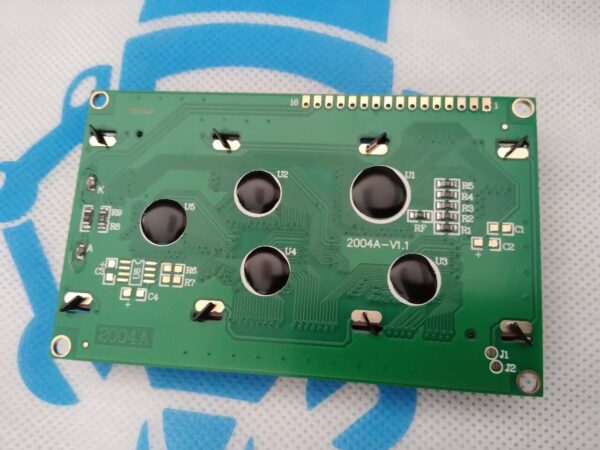+251 99 380 2995 | +251 97 022 2227 | [email protected]


20*4 LCD Display
Br 1,500.00
- In a 20×4 LCD module, there are four rows in display and in one row twenty character can be displayed and in one display eighty characters can be shown.
- This liquid crystal module uses HDD44780 (It is a controller used to display monochrome text displays) parallel interfacing.
- The liquid crystal display interfacing code is easily accessible. We just required eleven input and output pinouts for the interfacing of the LCD screen.
- The input supply for this module is three volts or five volts, with that module other components like PIC, Raspberry PI, Arduino.
- This electronic device can be used in different embedded systems, industries, medical devices, and portable devices like mobile, watches, laptops.
- The most important feature of this module is that it can display 80 characters at a time.
- The cursor of this module has 5×8 (40) dots.
- on this module already assembled the controller of RW1063.
- This module operates on the plus five volts input supply and can also work on the plus three volts.
- The plus three volts pinout can also be used for the negative supply.
- The duty cycle of this module is one by sixteen (1/16).
- The light-emitting diode of this module can get supply from the pinout one, pinout two, pinout fifteen, pinout sixteen, or pinout A and K.
- The LCD stands for liquid crystal display, that works on the light modulation features of liquid crystals.
- It is available in electronic visible display, video display and flat panel display. The invention of LCD gives new life to electronic industries and replaces lED and gas plasma techniques. It also replaces the CTR (cathode ray) tube that used for visual display. The input power consumed by the liquid crystal display is less then light-emitting diode and plasma display.
- Liquid crystal display works on two types of the signal first one is data and the second one is for control.
- The existence of these signals can be identified through the on and off condition of RS pinout. Data can be read by pushing the Read/write pinout.






